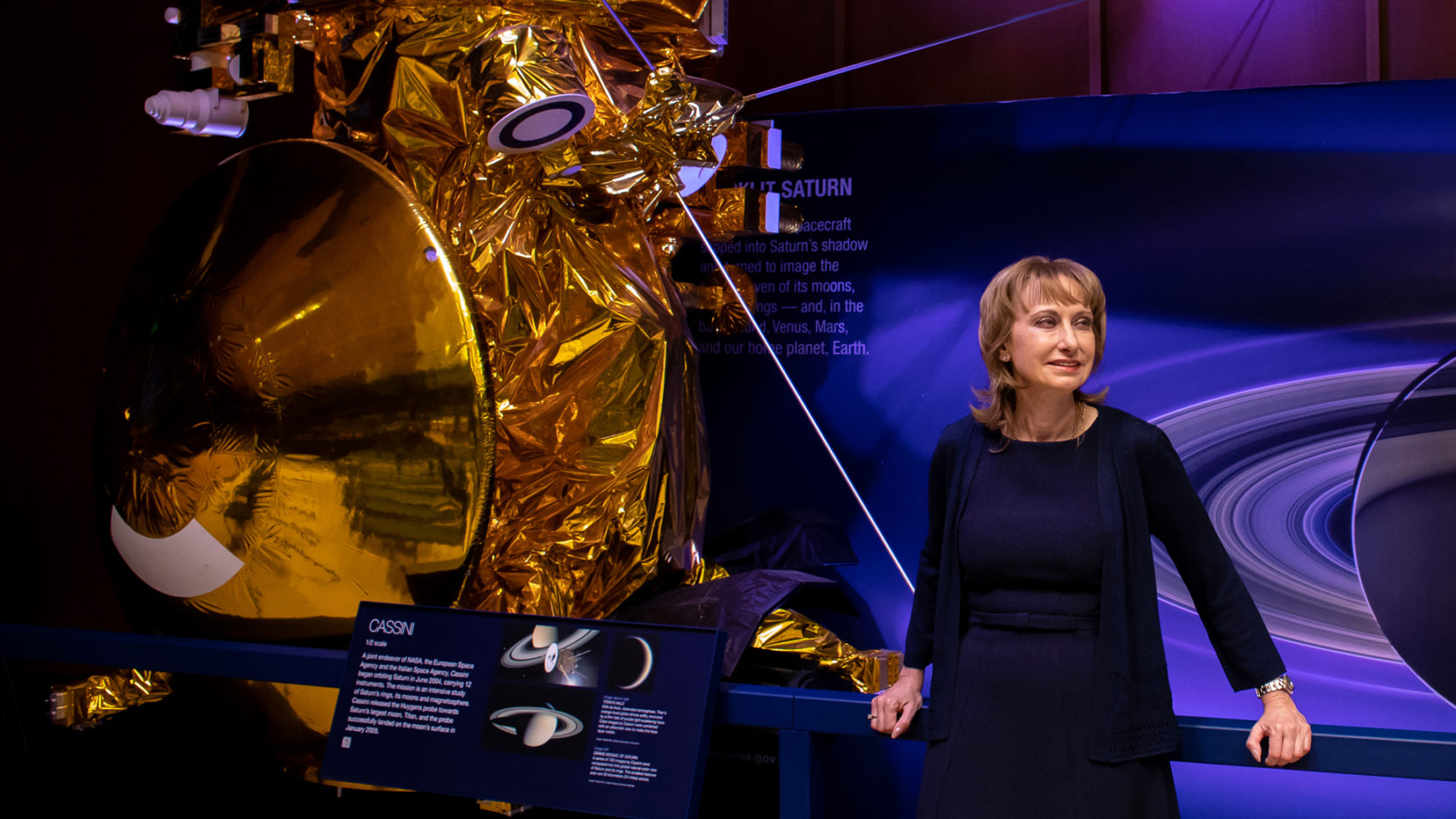To Understand Volcanoes on Other Worlds, Stand On Our Own
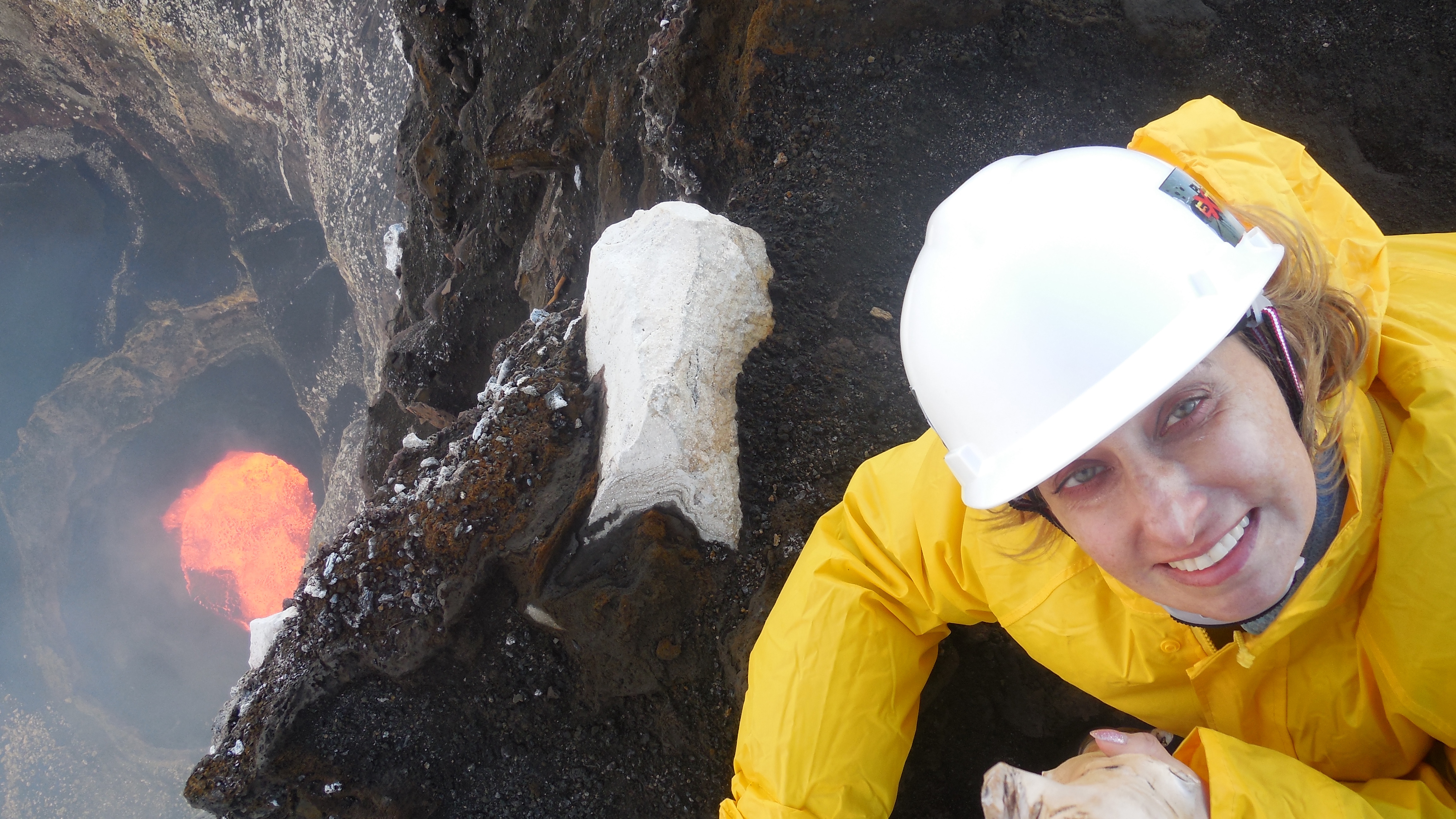
Rosaly Lopes in 2014 above one of the lava lakes at Ambrym, an exceptionally active volcano in the Pacific island nation of Vanuatu.
Courtesy of Rosaly Lopes
Introduction
In 1979, Sicily’s Mount Etna lurched to life, sending a plume of ash and several chunks of molten rock skyrocketing into the air. The outburst was unexpected. And for Rosaly Lopes, a 22-year-old graduate student in planetary science at the time, it was a close call. She and her colleagues had left the summit that morning to work roughly a mile downhill. But others were caught in the terrifying blast, which killed nine people. A man died on his honeymoon. A little boy’s parents were both killed.
“It was a very sobering experience,” Lopes said. But she returned to the summit the next morning, and in the ensuing decades, she has traveled to volcanoes on every single continent. With every trip, she has an evacuation route in mind and knows that if the volcano unexpectedly erupts, she should look skyward to carefully dodge the falling lava bombs. But for many of those volcanoes, lava is not the only danger. She visited a lava lake in Ethiopia a year before several researchers were shot and killed there. She braved the numbing cold of Antarctica to gaze at Mount Erebus, which holds a lava lake that puffs steam and launches lava bombs. And she hoped to visit Nyiragongo, a lava lake in the Congo, earlier this year, but an Ebola outbreak forced her to delay her plans.
All in all, Lopes has toured 63 active volcanoes and lava lakes — research that helps her better understand such infernos on other planets and moons across the solar system. That dangerous region in Ethiopia, for example, is dotted with yellow and green hot springs that bear striking similarities to Jupiter’s sulfur-studded moon, Io. And Laki, an ancient volcano in Iceland — which last erupted over 200 years ago, spewing a poisonous fog that smothered the globe for nearly a year — looks remarkably similar to a feature on Saturn’s moon Titan.
Lopes knows these alien features nearly as well as she knows their terrestrial doppelgängers — in part because she discovered most of them. As a planetary geologist at NASA’s Jet Propulsion Laboratory (JPL), she analyzed images from the Galileo mission to Jupiter, identifying 71 active volcanoes on Io — a feat for which she has been recognized with a Guinness World Record. She later found icy volcanoes on Saturn’s moons. And today she focuses her efforts on the tantalizing connection between volcanoes and extraterrestrial life in the outer solar system.
Quanta spoke with Lopes about volcanoes across the solar system and the open questions she hopes to soon answer. This interview has been condensed and edited for clarity.
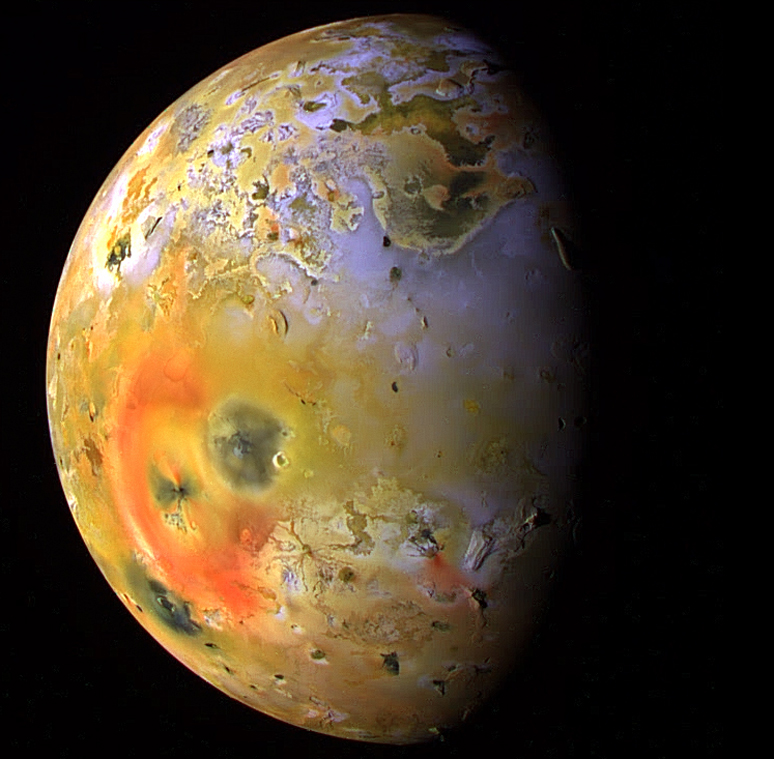
Jupiter’s moon Io is the most volcanically active body in the solar system. The dark regions in this image from the Galileo spacecraft show areas of recent volcanic activity. The large dark region toward the center of the image did not exist five months before this picture was taken.
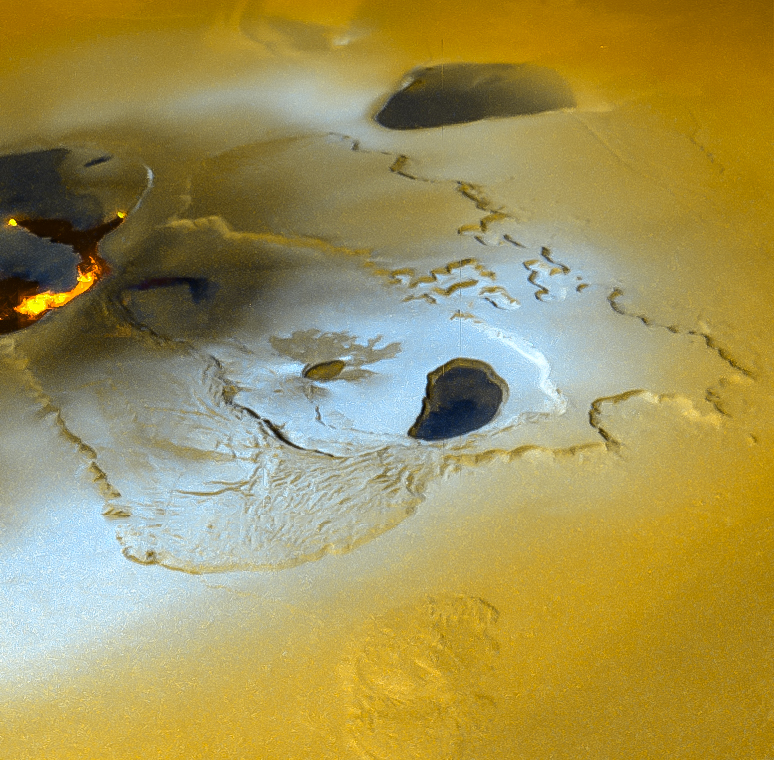
Lava spills from an eruption on Io in 2014.
Jupiter’s moon Io is the most volcanically active body in the solar system. Left: The dark regions in this image from the Galileo spacecraft show areas of recent volcanic activity. The large dark region toward the center of the image did not exist five months before this picture was taken. Right: Lava spills from an eruption on Io in 2014.
The first mission you worked on at JPL was Galileo. Tell me a little about Jupiter’s moon Io — why is it so exciting?
I was a student when Voyager spotted volcanoes on Io. It was such a sensation because it was beyond what we had seen on Mars, Venus, Mercury and the moon. That this little moon could actually host volcanic activity is pretty phenomenal when you consider that it’s about the size of Earth’s moon. It should have been dead long ago. But it’s not. Instead, Io is a volcanologist’s paradise, with over 150 detected active volcanoes.
But these volcanoes look different that those on Earth. Although Io has mountains, the mountains are not active volcanoes. The volcanoes are calderas on the ground where lava bubbles away. What’s more, when I started working with our highest-resolution data from Galileo, we noticed that several of these calderas showed a pattern with hot edges — a signature of a lava lake. In a lava lake, the crust cools pretty fast, forming this skin of cooler lava on top of the molten lava. That skin then sloshes around and hits the caldera walls where it breaks up and reveals the molten lava underneath. So it’s quite common to actually see hot areas near the margins of the calderas.
But it was a surprising find because lava lakes are very rare on Earth. Although we only have a few, I have now visited nearly all of them, including Mount Erebus in Antarctica.

Lopes at JPL.
Monica Almeida for Quanta Magazine
Have those places helped us understand Io?
Oh yes. We joke that the Danakil Depression — a surreal landscape in Ethiopia that is covered by bright yellow and green hot springs full of sulfur and sulfur dioxide — is like Io on Earth. Not only do the colors resemble Io, but it also has a very active volcano, Erta Ale, with a spectacular lava lake. And that lava lake has helped inform our studies on Io. Like a lot of things, unless you see something up close it can be hard to really understand it. But we saw the lava lake’s hot edges and watched how the crust moved and sunk — all while taking a number of temperature measurements.
Those measurements are key because there is still an open question about the composition of lavas on Io. And while we have no direct measurements on Io, we can use temperature as a proxy because we see on Earth that different lavas melt at different temperatures. Unfortunately, temperatures measured on Io are just on that borderline between basalt — like the lavas you find in Hawaii and elsewhere on Earth — and lavas that are called ultramafic — like the primitive lavas on Earth that erupted mostly billions of years ago.
But if Io’s lavas are truly primitive, then we could study Io in order to better understand what happened on Earth a long time ago. It also makes me wonder if lava lakes were a lot more prevalent in Earth’s past than they are now.
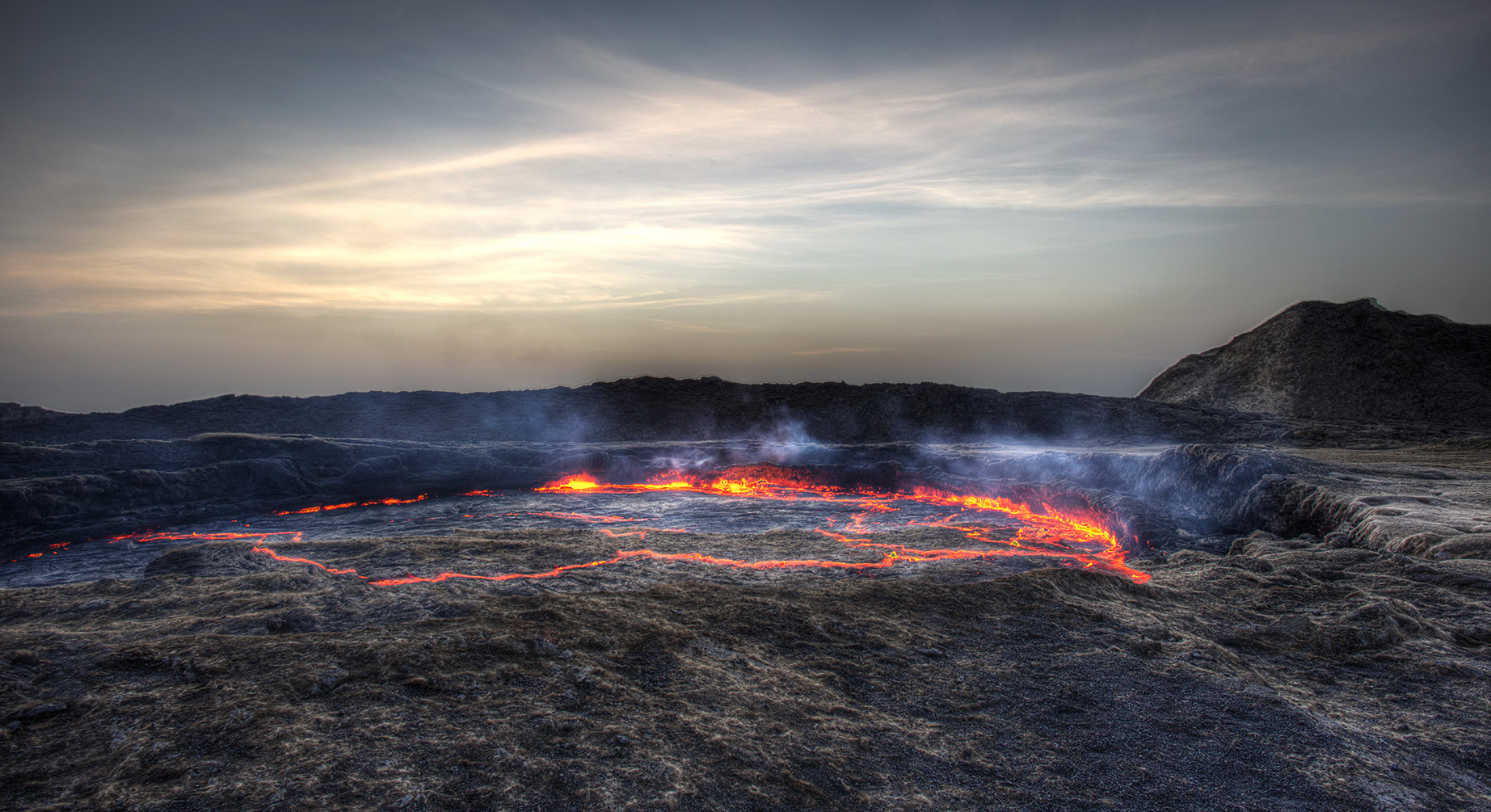
Erta Ale, a volcano in the north of Ethopia, contains a lava lake that has been active for at least five decades.
It sounds like Io is different from Earth in a number of ways — why?
Io, under the surface, is a very different world than Earth. Our planet is the only known body that has plate tectonics, but Io is heated by tidal heating — caused by the gravitational push and pull between Jupiter and the other big moons. So the guts of Io’s volcanoes may be really quite different from those on Earth.
Luckily, volcanoes — the process by which planets and moons lose heat — can help shed light on Io’s interior. There are several different models, for example, of how that gravitational push and pull heats the interior of Io. Of the two extreme models, one of them suggests that tidal heating is mainly dissipated in the deep mantle, forming large convection cells that rise up toward the poles where volcanoes ultimately form. But the other extreme model suggests that tidal heating is mainly dissipated in the shallow asthenosphere [the uppermost region of the mantle], forming convection cells that rise up toward the equator, thus leading to more volcanoes there instead. Then, of course, there are some models in between the two extremes.
In 1999, I wrote a paper that looked at the number and distribution of active volcanoes — only to find that more volcanoes are located in the equatorial regions. That said, not all volcanoes are created equal. What’s more, we used data from the Galileo mission, which did not have a good view of Io’s poles.
So a few colleagues and I decided to take a second look. We’re currently working on a second study — led by Julie Rathbun at the Planetary Science Institute — that doesn’t just look at the distribution of volcanoes but also at their relative heat flow using three different data sets from space missions. That paper has yet to be published, but in it, we argue that the correct model is not one of the extreme models — where heat dissipates in either the mantle or the asthenosphere — but some combination of the two.
Could these studies help us potentially understand rocky exoplanets?
Oh yes. Many exoplanets are thought to be super-Ios, where volcanism is still occurring on a large scale thanks to tidal heating. And many exoplanets are also thought to be ocean worlds. Those two characteristics bring about the possibility that life could have evolved there, since you have two of the necessary ingredients: heat and water.
Another question that I’m quite curious about is whether we will find an exoplanet that hosts plate tectonics. So far, Earth is the only known place in the solar system with plate tectonics, and scientists still argue about why or how plate tectonics got kick-started here. Is it the presence of water, which lubricates the movement of the subducting plates? Is it because the crust has a certain thickness relative to the size of Earth? We think the Martian volcanoes, for example, are so much bigger because the Martian crust is thicker relative to the size of the planet. Because plate tectonics couldn’t start on Mars, volcanoes kept erupting in the same places and growing to enormous proportions.
But if we found another world with plate tectonics, it would shed light on the problem and be a big find.
More recently, you’ve switched gears to focus on Saturn’s moon Titan. Is Titan volcanic?
That is still a little controversial. But I think that Titan does host cryovolcanoes, or ice volcanoes, which erupt slushy ices instead of molten rocks. We used the radar instrument on the Cassini spacecraft to find features that look dramatically similar to volcanoes and lava flows. I think the best example is a region that contains one of the tallest peaks of Titan, Doom Mons — named after Tolkien’s Mount Doom — and the deepest pit discovered so far on Titan, Sotra Patera. Those features, which are surrounded by flowlike features, simply look volcanic. In fact, they remind me of the Laki complex in Iceland — although Laki of course is not a cryovolcano.
In addition, there have been several indirect hints that Titan is still alive. A postdoc of mine, Anezina Solomonidou, found a change in brightness on the surface that coincided with the area I just mentioned. That could be attributed to degassing. Additionally, Titan’s atmosphere has methane. But methane is destroyed by sunlight — a strong hint that it could be replenished from the interior thanks to those cryovolcanoes.
There are still so many outstanding questions that we really need a new mission to Titan. It is such a fascinating world. Titan has a liquid ocean under its ice crust. It has lakes of liquid methane and rivers of liquid methane. It could still have active cryovolcanoes. It has organic materials that we think make their way through fractures in the ice crust and down into the ocean. Titan is really wild. I love Io, but I think that Titan is actually the most fascinating place in the solar system — not only geologically, but also because life could have evolved there.
Do scientists think that Titan’s subsurface is habitable?
I recently put together a team that will try to answer that exact question. The project was funded this May, and we will spend the next five years studying whether Titan’s subsurface ocean could be habitable, and then whether the material from the ocean could come to the surface and potentially contain detectable biomarkers.
Some team members, for example, will try to decipher if there are organisms that can survive the pressure and cold temperatures below Titan’s icy surface. To me, one of the most fascinating parts is that my colleagues will conduct experiments that simulate Titan’s ocean in order to find out what kind of bugs — as I call them — could actually survive. These bugs are bacteria like E. coli. And they’re quite hardy in that you can actually train bugs to survive high pressures like this. And it doesn’t mean we’ll have that exact bug on Titan, but maybe we’ll have something like it.
Now, of course you might think that life is sealed off from discovery, but here is where cryovolcanism comes in. Those icy volcanoes will bring that material from that ocean to the surface and the atmosphere — where we could potentially detect it. And it is true that we have not detected any volcanic activity on Titan directly, but that does not mean that the material cannot come back to the surface. Even if there is no cryolava, for example, gases could still be released — and with those gases, biosignatures. So the project will also look at what kind of biosignatures those bugs would produce and where we would go to detect them.
How optimistic are you that life exists beyond Earth?
I can’t be sure one way or another because we have a sample of one. But I treat it mostly as an experimentalist. We have to predict where and how we would find life on another planet, and we have to go look because that is really what’s going to tell us. If we find some kind of life on another world, there is no doubt it will be the most magnificent discovery in science. And several of us can contribute in small ways toward that grand goal.
